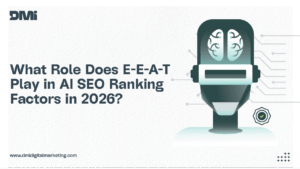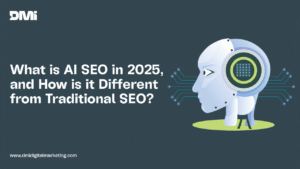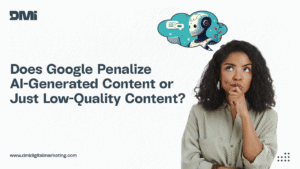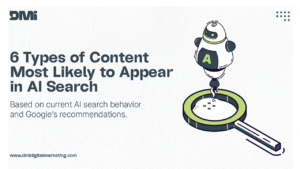Jump to Section
ToggleArtificial intelligence (AI) tools are changing how we create content. From blog posts to newsletters, AI can help us write faster and more efficiently. But while AI is a powerful assistant, it is not always accurate. It can make mistakes, mix up facts, or even invent information.
That’s why it’s important to fact-check everything AI writes and properly cite your sources. If you’re using AI to help with your writing, this guide will show you how to make sure your content is trustworthy, clear, and professional.
Whether you’re in marketing, freelancing, or building your own brand online, understanding how to verify AI-generated information and cite sources correctly is essential. It helps you maintain credibility, build trust with your audience, and improve your search engine rankings.
Why AI-Generated Content Needs Fact-Checking
AI tools like ChatGPT and Jasper can produce text that sounds natural, fluent, and human, but they don’t truly comprehend the meaning behind what they’re saying. AI is generating language, not thinking or knowing in the real sense of the word. This often lead to hallucination:
- AI may include incorrect or outdated facts.
- It can create fake quotes or statistics.
- It might cite sources that don’t exist.
For example, an AI tool might say that a certain study proves something, but when you look it up, the study doesn’t exist. Publishing this kind of error can hurt your credibility and damage your brand’s reputation.
Another issue is that AI tools often present information with confidence, even when it’s wrong. This can make it harder to spot errors, especially if the content sounds polished and professional. That’s why human review is essential.
In addition, AI tools may not be updated with the latest information. If you’re writing about current events, trends, or recent research, relying solely on AI can lead to outdated or misleading content.
How to Fact-Check and Cite Sources in AI-Assisted Articles
Here are six simple steps to help you verify AI-generated content and cite your sources correctly.
Step 1: Know What Needs to Be Checked
Not every sentence needs a source, but you should always double-check:
- Numbers and statistics
- Historical facts and dates
- Scientific or medical claims
- Legal or financial advice
- Quotes or statements from public figures
If something sounds surprising or very specific, it’s a good idea to verify it.
Also, be cautious with statements that could affect your audience’s decisions. For example, if you’re writing about health, finance, or legal topics, make sure every claim is backed by a reliable source.
Step 2: Use Trusted Sources
When checking facts, rely on reliable and well-known sources. These include:
- Government websites (like cdc.gov or data.gov)
- Academic journals (Google Scholar, JSTOR)
- Major news organizations (BBC, Reuters, Associated Press)
- Industry leaders (like HubSpot for marketing or Harvard Business Review for business)
If AI says that “email marketing has a 4,200% return on investment,” look for that number on trusted marketing websites or research reports.
Avoid using sources that are biased, outdated, or lack authority. Blogs without author names, websites with no contact information, or articles with no publication date are less trustworthy.
Step 3: Use Search Engines and Fact-Checking Tools
Since AI tools may not have the latest information, use search engines to find up-to-date facts. You can also use fact-checking websites like:
- Snopes
- PolitiFact
- FactCheck.org
These sites are helpful for checking news stories, quotes, and common myths.
You can also use Google’s advanced search features to narrow down results. For example, use “site:.gov” to search only government websites or “site:.edu” for educational institutions.
If you’re verifying a quote, try searching the exact phrase in quotation marks. This helps you find the original source and confirm its accuracy.
Step 4: Add Proper Citations
Once you’ve confirmed a fact, make sure to cite the source. Here’s how:
- Use hyperlinks to link to the original source.
- Include the name of the author or organization, the title of the article, and the date it was published.
- Do not cite the AI tool itself. Always find and cite the original source.
Example: According to a 2023 report by MarTech, a digital insights platform owned by Semrush, 73% of B2B marketers use AI tools to create content.
Proper citations not only support your claims but also improve your content’s credibility. They show that you’ve done your research and that your information is based on reliable sources.
Step 5: Keep a Record of Your Sources
It’s a good idea to save the links and notes from your fact-checking process. This helps you:
- Stay organized
- Update your content later if needed
- Show your team or clients where your information came from
You can use a spreadsheet or a simple document to keep track of your sources. Include the URL, publication date, and a brief summary of the information.
This is especially useful if you’re working on a large project or collaborating with others. It makes it easier to review and revise your content over time.
Step 6: Be Honest About Using AI
If you used AI to help write your article, it’s okay to say so. Being transparent builds trust with your readers. You can include a short note like:
“This article was created with the help of AI and reviewed by our editorial team for accuracy.”
Transparency is becoming more important as AI tools become more common. Readers appreciate honesty, and disclosing your use of AI shows that you’re committed to quality and integrity.
FAQS
Can I trust the sources that AI gives me?
Not always. AI tools often make up sources or mix up real ones. Always check the source yourself.
Should I tell readers that I used AI?
Yes. Being open about using AI shows honesty and builds trust.
What if I can’t find a source for something AI wrote?
If you can’t verify it, don’t use it. Replace it with information you can confirm.
Are there tools that help with fact-checking?
Yes. You can use tools like Google Search, Grammarly, Copyscape, and Google Fact Check Explorer to help verify facts and check for plagiarism.
Does fact-checking help with SEO?
Yes. Google rewards content that is accurate and trustworthy. Fact-checking helps improve your search rankings by showing that your content is reliable.
Can I use AI to help with citations?
Some AI tools can suggest citations, but you should always verify them. Many tools generate fake or incorrect references, so it’s best to find and confirm sources yourself.
Is it okay to use AI for research?
AI can help you find ideas and summarize information, but it should not replace real research. Use AI as a starting point, then dig deeper using trusted/verifiable sources.
How often should I update AI-assisted content?
Review your content regularly, especially if it includes statistics or time-sensitive information. Updating your articles helps keep them accurate and improves their performance in search engines.
Conclusion
AI is a helpful tool for writing, but it’s not perfect. It can save time and spark ideas, but it still needs a human touch to make sure the content is accurate and well-sourced. When you fact-check your AI-assisted content and cite your sources properly, you protect your brand and build trust with your audience.
At DMi- Digital Marketing Agency, we believe in using technology responsibly. That means combining the speed of AI with the care and attention of human editors.
Creating high-quality content takes effort, but it’s worth it. Accurate, well-cited articles perform better in search engines, attract more readers, and strengthen your reputation. So the next time you use AI to help with your writing, remember to check the facts, cite your sources, and keep your standards high.
If you’re looking to create content that’s both efficient and credible, we’re here to help. DMi Agency offers expert content marketing and AI SEO content support to help you make the most of AI while maintaining the highest standards of quality. Let’s work together to make your content smarter, stronger, and more reliable.







